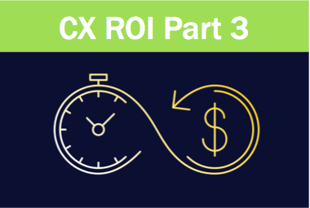Customer Experience Mapping – A first step to creating more positive customer experiences.
In Proving ROI on Customer Experience Part 2, we presented four “experience investment” lenses to help you plan, measure and improve interactions with your customers, and prove significant ROI before you invest.
 Job number one in improving customer experience is to identify the touchpoints you have, and create a map of where you are today.
Job number one in improving customer experience is to identify the touchpoints you have, and create a map of where you are today.
Touchpoints are the places where companies interact with and “touch” customers, delivering value or driving customers away.
Experiences are defined at these touchpoints, and the opportunity for mapping ROI is based on finding out which touchpoints work, which don’t, and why. Then, improving them. In fact, most companies don’t even have a complete picture of existing touchpoints —even the ones they control. So where do you start?
A typical process for experience improvement can include these steps:
- Audit individual customer touchpoints across the Customer Relationship Lifecycle stages (from awareness through to advocacy).
- Map out the key processes for each of the lifecycle stages.
- Understand how individual touchpoints work—in sequence or alone—to move customers through the lifecycle and closer to your company:
- Gaps where touchpoints should exist—and don’t
- Redundancies—where touchpoints do exist, and shouldn’t
- Identify the specific interactions where touchpoints drive value across different segments, with regards to:
- Customer loyalty
- Value to your business, and to your customers
- Revenue generation (or cost savings)
- Determine the gap between desired and actual experience, and desired and actual results at these points.
- Construct a specific plan for moving forward – one that sets priorities, maps out the costs and benefits, and provides specific metrics for measuring the results.
- Codify the optimal experience, begin the process of operationalizing it.
Building an ROI case: Measuring Customer Experience
There is no doubt that improving customer experience is important. Whatever approach you take, knowing where to focus limited resources, and how to use experience as a competitive differentiator is key to justifying—and prioritizing—investment.
This understanding is at the core of our business and it’s why we’ve developed our suite of Customer Experience Mapping tools. Our perspective is that improving customer experience starts with an understanding of customer touchpoints and the emotions they drive. We identify, understand, measure, and improve the experiences that drive your customer relationships, with statistically precise approaches for gathering, listening to and acting on the voices of your customers.
This is why you must focus on what can be directly measured. There are many less tangible benefits (ranging from brand affinity and preference to employee satisfaction, to name but a few), but the case for Experience ROI should be made with a clear understanding of which measurable monetary and value levers can be moved—and how.

